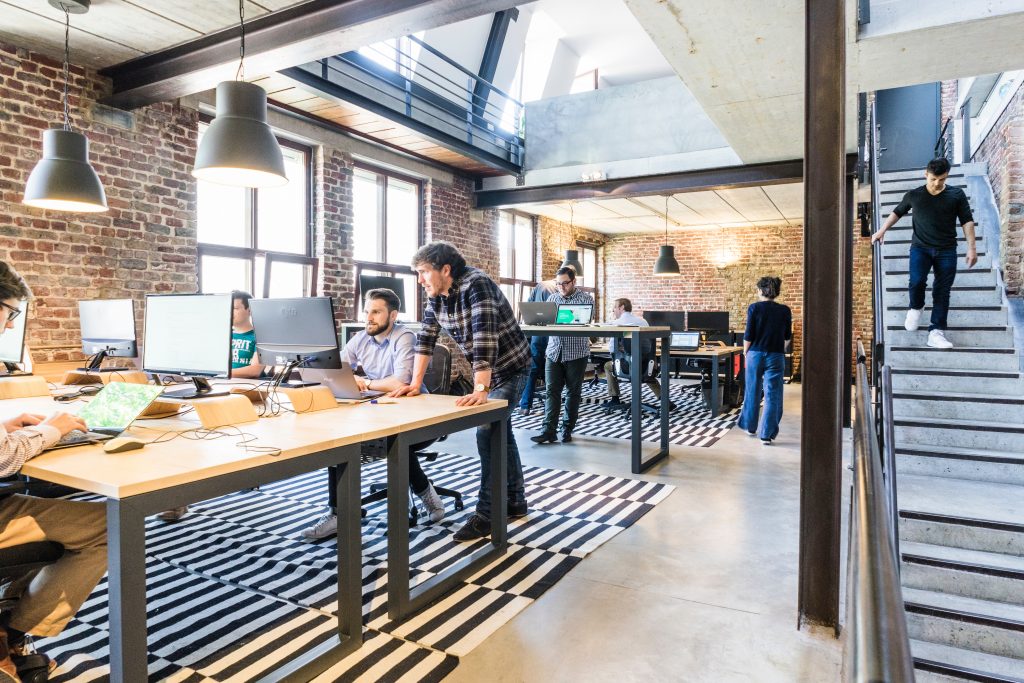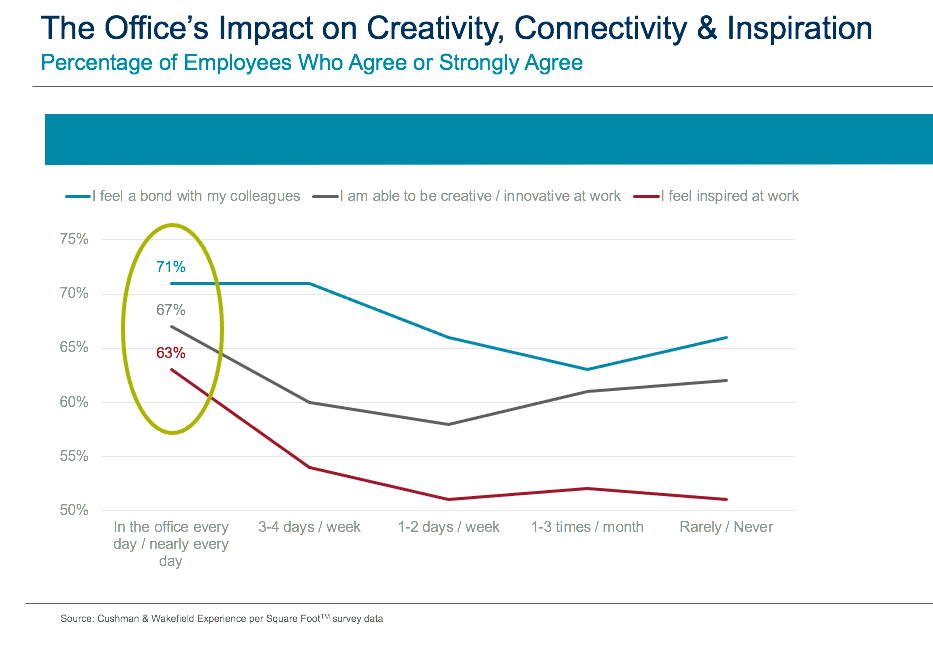The location, design and quality of workspace is even more important with an increasingly agile workforce, not less.

Uncertainty has a way of welcoming conjecture and myths. The last year, of course, has been nothing if not uncertain. The pandemic has brought with it health concerns, economic difficulties, limitations on activities, and a restructuring of how and where office workers spend their days. The narratives have grown; big cities are dying, no one wants to be in the city center and there is no future for the office. All three of these are untrue (or at best, premature).
The office isn’t going to disappear; however, it is certainly going to change. The corporate office will become one part of a workplace ecosystem that provides greater flexibility to agile workforces through access to core office spaces as well as home offices and third places (such as, coffee shops, community hubs, on-demand event spaces, and/or flexible office / coworking locations). This reality is borne out in recent data which indicates a huge shift in workplace strategy towards hybrid models (with a mix of in-office and remote work), but no change from pre- to post-COVID related to workplace strategies that are “remote first.” Said another way, 100 percent virtual is not likely to be a common office solution.

However, if the office is going to continue to be the primary place where knowledge economy and creative class work gets done then what does the core office need to look and feel like? The place to begin is with the purpose of the office. The office needs to drive business objectives and it needs to provide organizations, teams and individuals with those things they cannot access when they are working remotely. When the pandemic winds down, companies will have an opportunity to deeply explore not just how their people return but also why they return to the office. Three of the primary long-term drivers of the usage of the office as a workplace will be connection, collaboration and career.
Connection: During the pandemic-induced work-from-home experiment, half of employees have indicated they do not feel connected to their organization’s culture. While team interaction has remained high with the broad implementation of video conferencing technology, the emotional connection between individuals and the sense of belonging at work have taken a hit. This has real business consequences since belonging can improve job performance by 56 percent and decrease turnover risk by 50 percent.[1]
Collaboration: Research has shown that remote working can improve product development performance and the speed with which new innovations occur.[2] However, the findings came with an important caveat, as noted by the authors, businesses “cannot do without a sufficient level of face-to-face contact.” Pure virtual offices would likely stymie innovation. This is confirmed by two studies that suggest that the optimal outcome of remote work exists when it is done only on a part-time basis, which can reduce isolation of employees and increase their knowledge interaction.[3], [4]

Career: In the short-term 100 percent remote work makes it difficult for employees (especially younger ones) to engage in informal learning and development or receive mentoring from more experienced colleagues. A third of employees–regardless of age—do not believe they are learning while working primarily remotely. What does this portend for the long-term impacts on individuals’ careers and on organizations’ business performance?
Space layouts matter…
During the decade following the Great Financial Crisis, cost consciousness and the rise of “coffee house” work culture led to the tightening of office densities. Between Q3 2019 and the end of 2019, the average square footage per U.S. office employee decreased from 212 to just under 193 square feet per employee (-9.2 percent). And, there are certainly examples of occupiers (and flex office / coworking providers) hitting densities under 125 square feet per employee. Even prior to the pandemic, employees were indicating that open plans with dense seating charts were negatively impacting their ability to focus, renew and work with their team.
It is no surprise then that the employees whose experience scores in those three areas have improved the most during pandemic-induced remote work are those that were coming out of highly dense, open seating plans. Employees in flexible space with a strong mix of personal workspace, enclosed conference areas and open collaborative space are the ones who miss their offices this most.

People, not just place…
Workplace strategy and design must be human-centric, and organizations must pay specific attention to the needs and wants of its various employee personas as well as the work and interaction patterns of different types of teams. This requires strong partnership between corporate real estate departments and business / strategy leaders, finance, human resources and change management.
The location, design and quality of workspace is even more important with an increasingly agile workforce, not less. Office environments will be curated to increase flexibility of function, to provide inspiration, to support learning and mentoring, to reinforce purpose, to embody corporate culture and to accommodate meaningful experiences for employees. All of this will need to keep in mind both the employees in the building on any given day and the workers connecting in digitally at any given moment.
[1]Carr, Evan; Reece, Andrew; Rosen Kellerman, Gabriella and Robichaux, Alexi, “The Value of Belonging at Work” Harvard Business Review, https://hbr.org/2019/12/the-value-of-belonging-at-work.
[2]Coenen, M. and Kok, R.A.W. (2014). Workplace flexibility and new product development performance: The role of telework and flexible work schedules. European Management Journal 32(4), 567-76.
[3]Goodrich, J.N. (1990). Telecommuting in America. Business Horizons 33(4), 31-37.
[4]Baruch, Y., and Nicholson, N. (1997). Home, sweet work: Requirements for effective home working. Journal of General Management 23(2), 15-30.


